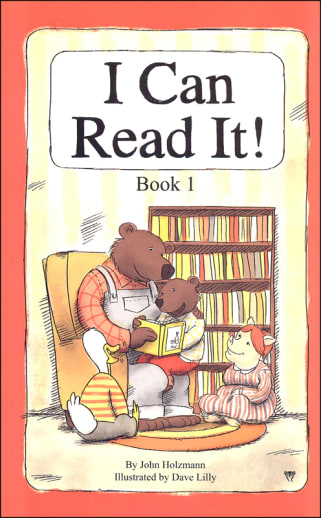Book 1 contains 9 lessons and 45 stories that follow the sequence found in Word Lists.
I Can Read It! Book 1
Description
The I Can Read It! phonics program never loses sight of the goal—reading! This uncomplicated, yet comprehensive phonics-based program uses stories that your child will want to read.
The core book, Word Lists, is divided into 68 lessons and organized according to traditional basic phonics word families: short vowels, beginning and ending blends, consonant and vowel digraphs (two letters that make a single sound), syllabication, three-letter word families, special vowel combinations, hard and soft sounds, and silent letters. The program’s educational premise is simple: introduce a word list, learn a few sight words, and read stories—with the emphasis on reading the stories, and probably more than once. In fact, the author suggests that you read after and/or before your child reads so that the experience of sounding out words is coupled with hearing the appropriate voice inflection and fluency to facilitate understanding.
Book 1 (9 lessons, 45 stories), Book 2 (7 lessons, 35 stories), and Book 3 (8 lessons, 40 stories) provide the stories and follow the sequence found in Word Lists. All parent instruction is found in Word Lists. This is an easy, inexpensive pick-up-and-go phonics and reading program that is strong on reading practice and systematic phonics, but you may wish to add reinforcement.
| Product Format: | Softcover Book |
|---|---|
| Grades: | PK-2 |
| Brand: | Avyx |
| Author: | John Holzmann |
| ISBN: | 9781887840491 |
| Length in Inches: | 8.5 |
| Width in Inches: | 5.5 |
| Height in Inches: | 0.5 |
| Weight in Pounds: | 0.3 |

